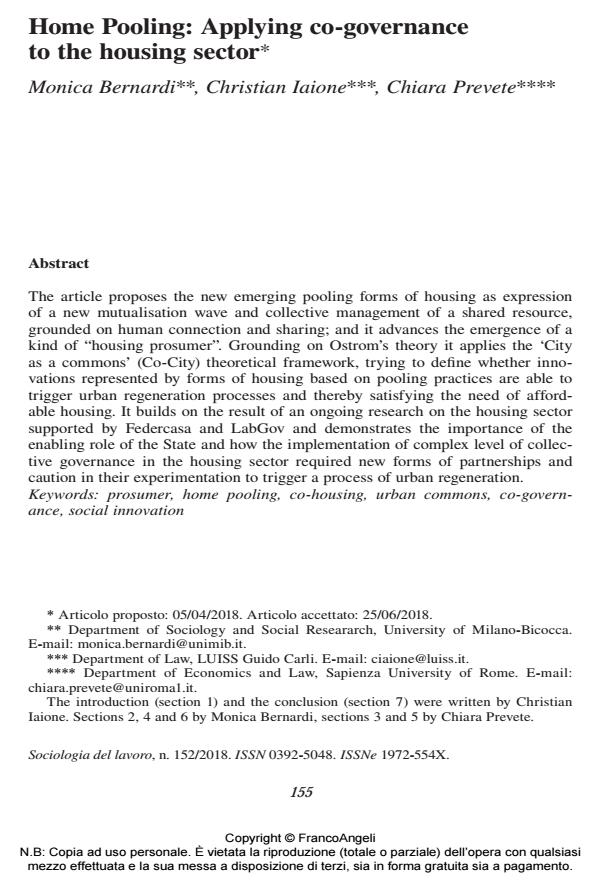Home Pooling: Applying co-governance to the housing sector
Journal title SOCIOLOGIA DEL LAVORO
Author/s Monica Bernardi, Christian Iaione, Chiara Prevete
Publishing Year 2018 Issue 2018/152
Language English Pages 19 P. 155-173 File size 126 KB
DOI 10.3280/SL2018-152009
DOI is like a bar code for intellectual property: to have more infomation
click here
Below, you can see the article first page
If you want to buy this article in PDF format, you can do it, following the instructions to buy download credits

FrancoAngeli is member of Publishers International Linking Association, Inc (PILA), a not-for-profit association which run the CrossRef service enabling links to and from online scholarly content.
The article proposes the new emerging pooling forms of housing as expression of a new mutualisation wave and collective management of a shared resource, grounded on human connection and sharing; and it advances the emergence of a kind of "housing prosume". Grounding on Ostrom’s theory it applies the ‘City as a commons’ (Co-City) theoretical framework, trying to define whether inno¬vations represented by forms of housing based on pooling practices are able to trigger urban regeneration processes and thereby satisfying the need of afford¬able housing. It builds on the result of an ongoing research on the housing sector supported by Federcasa and LabGov and demonstrates the importance of the enabling role of the State and how the implementation of complex level of collec¬tive governance in the housing sector required new forms of partnerships and caution in their experimentation to trigger a process of urban regeneration.
Keywords: Prosumer, home pooling, co-housing, urban commons, co-govern¬ance, social innovation
- Urban Infrastructure in Zimbabwe Innocent Chirisa, Takawira Mubvami, Brilliant Mavhima, Abraham R. Matamanda, Thembani Moyo, pp.17 (ISBN:978-3-031-45567-4)
Monica Bernardi, Christian Iaione, Chiara Prevete, Home Pooling: Applying co-governance to the housing sector in "SOCIOLOGIA DEL LAVORO " 152/2018, pp 155-173, DOI: 10.3280/SL2018-152009